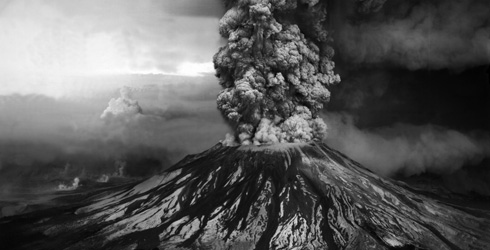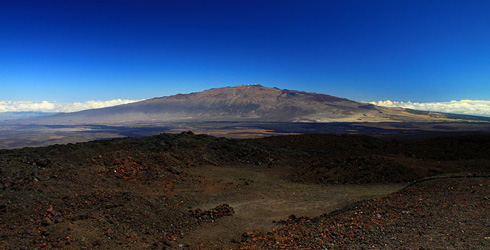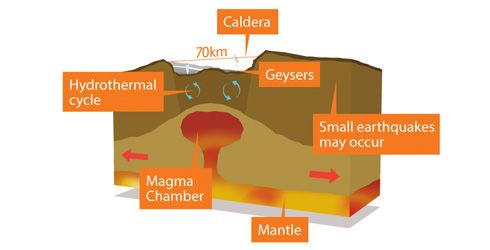- Home
- > Nature online
- > Earth
- > Natural disasters
- > Volcanoes
- > Volcano types
Primary navigation
Types of volcano
Volcanoes come in many varieties. Their shape and size, and the type of eruptions they produce, are determined by factors such as the viscosity of the magma rising through them, and the amount of gas below the surface. Find out more below.

Cinder cone
These are relatively small volcanoes made from loose volcanic cinders (pieces of solidified lava) and most are relatively short-lived.
Image: a cinder cone called Parícutin, in Mexico, formed suddenly in a cornfield in 1943. In just one year it grew to a height of 300m. Then, by 1952, its eruptions stopped. Cinder cones can also form on the side of larger volcanoes.

Stratovolcano
The most famous type of volcano is the stratovolcano, also known as a composite volcano. They cause the most explosive eruptions and are tall with steep sides, built from layers of volcanic ash, debris and cooled lava.
There are many stratovolcanoes across the world. The islands of Indonesia are home to several, some reaching up to 30km wide.

Shield volcano
A shield volcano has a broad base and shallow, gently sloping sides.
Because its lava is runny (ie has a low viscosity), it flows over a large area before it cools. Layers of cooled lava build up into the shape of a warrior’s shield. Shield volcanoes are the largest volcanoes and can reach 120km wide.
Image: Mauna Kea, an extinct shield volcano in Hawaii, has the broad base characteristic of a shield volcano.

Supervolcanoes
A supervolcano is a volcano that ejects more than 1000 cubic km of material, and which is thought to be capable of erupting again. Thankfully, such eruptions occur only about once in 100,000 years.
Supervolcanic eruptions have devastating effects because they usually cover huge areas with lava and ash. As with any large-scale eruption, they also release ash clouds that block out the Sun and change Earth’s climate.
Scientists have identified eight supervolcanoes around the world, but the chance of them erupting during our lifetime is very small. The last big eruption was 74,000 years ago at Lake Toba in Sumatra, southeast Asia. The eruption was so large it cooled Earth by up to 5 degrees Celcius and nearly caused the extinction of humans.
- Contact and enquiries
- Accessibility
- Site map
- Website terms of use
- © The Trustees of the Natural History Museum, London
- Information about cookies
- Mobile